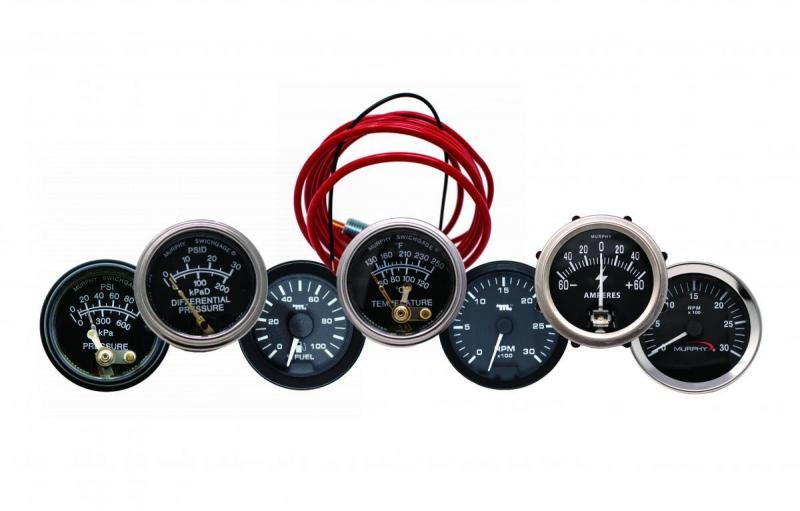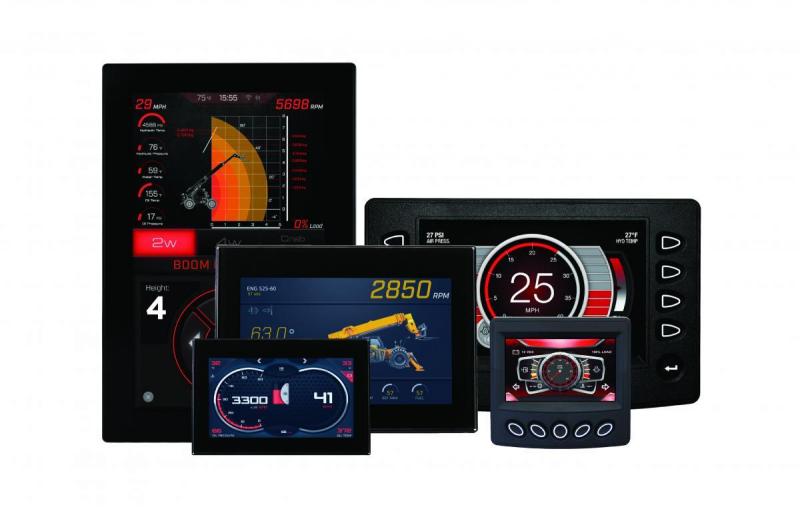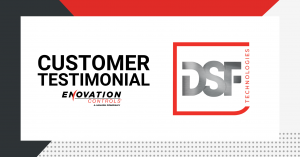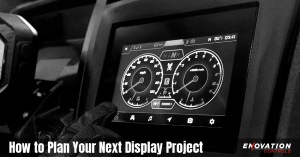Enovation Controls built a legacy on decades of innovation and the development of their trustworthy Murphy gauges. Through the years, Enovation Controls has also evolved their control products into electronics and now provides a variety of edge-to-edge and tactile-button displays and controls for a wide range of markets. With all these available product solution options, how do you figure out what you need for your application?
We took a deep dive into our product options so you don’t have to find the best use cases for Murphy displays and gauges.
When your application needs a gauge:
- You need an affordable way to monitor your engine. Murphy gauges are simpler but more cost-effective than the average Murphy display.
- You need a dedicated instrument that is easy to read. Murphy gauges focus on a single parameter and are easy to read in all weather and light conditions.
- You need an instrument that is easy to install. Depending on your gauge type, installing Murphy gauges is as easy as attaching to your engine or equipment with as few as one or two wires.
- You have a mechanical engine and only need basic monitoring based on a few inputs.
When your application needs a display:
- If you need to monitor multiple parameters. It’s not practical to have 35 physical gauges, but with modern displays, you can have pages of virtual gauges available and only take up a few inches of physical space. Modern electronic engines also have lots of valuable text information on the CAN bus that can’t be accessed or displayed by gauges.
- If you need to directly control the equipment. Where switching gauges or only interact at setpoints, displays can directly interact any number of ways with other devices through analog and digital outputs or via the CAN bus. This allows a display to replace one or more existing switches in an application.
- If you need advanced shutdown logic (auto-start and stop, timers, telematics). A display can run code that is customized for your application to make sure that it enhances every aspect of the operator experience.
Are there times when you could have either option & it is just based on preference?
Absolutely. On any application, the use of gauges and/or displays really comes down to preference and use case. For safety-focused applications, the always-visible nature of a dedicated gauge can be especially useful but displays can be programmed to meet the same need. For electronic engines, we make CAN gauges that read the electronic data and still provide a physical representation of engine operation, giving the classic look of a gauge but the modern flexibility of electronic data. With more sizes and options than ever before, as well as technology enhancements (like telematics and infotainment abilities), the greater versatility that comes from a single-display solution is an increasingly popular option major OEMs are preferring over gauges. But gauges still have their place, often grouped together in panels, on mechanical or less attended to applications, because who needs a screen if there’s no user to look at it?
No matter what you choose, you really can’t go wrong with either a Murphy display or a Murphy gauge. Both product lines have a ton of benefits to offer and are work-tested and operator-approved. The combinations are endless and we are constantly finding new ways for our gauges and displays to be implemented into a system solution for our customers.





